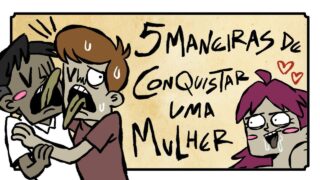Como é fabricada a BICICLETA #BORAVÊ
0Today we came to Itapira, in the interior of São Paulo, to show you how bicycles are made. Let’s see. We came to Force Bikes, which is a Brazilian manufacturer. And what’s really cool is that they make the bike absolutely from scratch. The raw material is simply aluminum pipes. The first step is to cut, but later I’ll tell you how complicated it gets. Some pipes, for example, will be curved. This is done on a steel base clamped in a hydraulic press. It’s very satisfying to do this. The same part needs a fitting to be welded. And what will do this is a robotic hole saw, everything very well adjusted so as not to make mistakes in the measurements. Some holes, such as those in the bottom bracket, the part of the frame where the chainring assembly is attached, are also made in the press. This part will still need an internal thread. It is turned on a computer-controlled machine, which also finishes the area where the fork and stem are attached, where the handlebars go. Here the chassis marking will be done. It’s a code that’s down there and each bike has a different one. If it is stolen, you can know that the bike was yours. I don’t even need to explain much, right? It is a kind of steel stamp on the tip of the hydraulic press that will mark the aluminum. The dropout, which is the part that goes at the end of the frame, where the rear wheel is attached, is made in a completely different way than I imagined. What arrives here is a steel bar with a strange shape, full of strange curves, but when the machine cuts it, this is what comes out on the other side. It’s almost ready to be welded to the frame. I swear I imagined that this was an aluminum plate that was cut with a laser, something like that. But no, I’m just showing some examples of the processes that happen here where the raw material arrives. Just to give you an idea, this press behind me can do four things at the same time. This hole, one dented vertically, another horizontally and even a cut at the tip. The time has come to weld and it’s not all done by eye, no. The pieces are placed in a jig and first a stitching is done. It’s a machine similar to the one we use in the world’s manual and it’s as if they were putting drops of glue just to keep the pieces in place. Then comes the real welding. It is the TIG type, it has a tip that heats up on one side and on the other they place an aluminum wire that melts and sticks everything together. It’s a type of solder that gives a really cool finish and I’ve never used that type of solder before. So let’s not miss the opportunity to do some damage here, right? Yes. And I have to confess to you that it really is something that requires a skill that is well beyond my competence. Look what a horrible thing I did. If before I had made a pigeon poop, in this second attempt it was already an ostrich poop, more or less. Of course, this is not what will happen with professional welding, which if you look closely, you can see that there are no lumps, no burnt parts, it is as if a cord formed over the place where it was welded. Despite all the care taken to ensure that everything is exactly right, welding heats up the aluminum a lot and this causes it to expand a little and it can lose its measurements. So the bike will now go through a general alignment stage. This ensures, for example, that the rear wheel is exactly behind the front wheel, one thing that is very well matched to the other. At this point in the game, the aluminum is already quite dirty. So, the painting goes through an acid bath and comes out like this, look, shining on the other side. The frame has a lot of curves that I thought were just for aesthetics to make it look pretty, but no. Here at the front, for example, there is this bulge to prevent the bike’s suspension from hitting. The little dent here is to avoid knocking the candle. This inside curve is to let the tire pass. And here at the end the two tips have to be parallel to each other, that’s why there’s this curve in the middle. It’s time to go through the first oven. These frames will stay there for 6 hours at 190ºC. This rearranges the aluminum atoms inside the metal and makes it much stronger. Let’s paint. First, a light sandpaper is applied and then the frame is painted with powder paint that sticks to the metal using static electricity. It’s as if the bike were the pen and the ink were these little pieces of paper. The result is pretty crazy. This looks like velvet. It makes you want to run your hand over it to feel the texture. But I can’t do that because the paint is completely loose. For it to hold, the frame needs to go through an oven at 195ºC. There the paint will melt and stick to the metal. The result is very good. The paint is firm and uniform, as if it were a refrigerator paint job. It still needs to be stickered. It is a very thin film with a water-based glue. It is applied in a very delicate way to avoid leaving any bubbles. I tried here, but I don’t think it turned out very well, for a change. After that, the frame needs to rest overnight for the glue to dry. As you might have imagined, with a thin adhesive, this will come off easily, right? But no. They clean well to remove all the glue. They apply a layer of electrostatic varnish which is white here, but then the painting goes into the oven for the last time and the varnish becomes transparent. And now yes, look. In the end, if you run your hand over it, it is impossible to feel the texture. And this here is the final product from the Itapira factory. It is a 100% national framework. This is the most entry-level model and is feminine. There’s this curve that we saw being made there in the press. This one is a more complex picture. Its front is conical. Here we have a shaped tube. It starts out a little thick and gets thinner. And the rear is very short, with the seat post curved so the wheel doesn’t catch. Looking from afar, you might imagine it’s heavy, but this one weighs 1,900g. It’s very light. The final assembly will take place at another First factory in Jundiaí, but the assembler came here to show us the process. The parts are all imported and the work takes only half an hour. It’s much faster than making the frame. And this here is the finished bike. Let’s go for a walk. What I think is cool about “Bora Vê” is that after we see how something is made, we start to look at everything with different eyes. Now, the next time I look at a bike frame, I’ll think about every weld, the reason for every little curve there is. I hope this happens to you too who are watching this video. As a suggestion, if you like “Bora Vê”, I’ll leave you another Bora Vê about transportation that is really cool, one of my favorites, which is how a tire is made.









